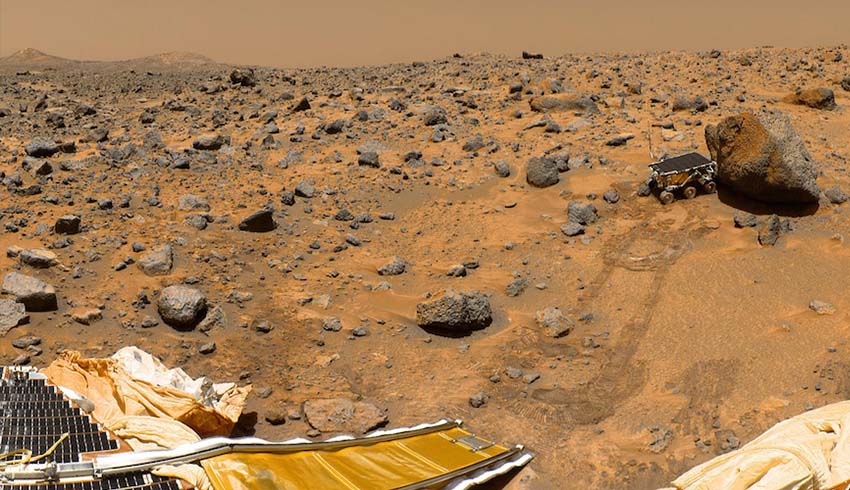The study used data from NASA's Curiosity rover on Mars and was conducted by researchers on Curiosity's Sample Analysis at Mars (SAM) instrument team and international colleagues.
These key ingredients are nitrites (NO2) and nitrates (NO3), fixed forms of nitrogen that are important for the establishment and sustainability of life as we know it. Curiosity discovered them in soil and rock samples it took as it traversed within Gale crater, the site of ancient lakes and groundwater systems on Mars.
The study, led by Dr Rafael Navarro-González and his team of scientists at the Institute of Nuclear Science of the National Autonomous University of Mexico in Mexico City, used a combination of theoretical models and experimental data to investigate the role hydrogen plays in altering nitrogen into nitrites and nitrates using energy from asteroid impacts. The paper was published in January in the Journal of Geophysical Research: Planets.
"The big surprise was that the yield of nitrate increased when hydrogen was included in the laser-shocked experiments that simulated asteroid impacts," Dr Navarro-González said.
In the lab, the study used infrared laser beam pulses to simulate the high-energy shockwaves created by asteroids slamming into the atmosphere. The pulses were focused into a flask containing mixtures of hydrogen, nitrogen and carbon dioxide gases, representing the early Martian atmosphere. After the laser blasts, the resulting concoction was analysed to determine the amount of nitrates formed. The results were surprising, to say the least.
"This was counter-intuitive as hydrogen leads to an oxygen-deficient environment while the formation of nitrate requires oxygen. However, the presence of hydrogen led to a faster cooling of the shock-heated gas, trapping nitric oxide, the precursor of nitrate, at elevated temperatures where its yield was higher," added Dr Navarro-González.
Jennifer Stern, a planetary geochemist at NASA's Goddard Space Flight Center in Greenbelt, Maryland, and one of the co-investigators of the study, said, "Having more hydrogen as a greenhouse gas in the atmosphere is interesting both for the sake of the climate history of Mars and for habitability.
"If you have a link between two things that are good for habitability – a potentially warmer climate with liquid water on the surface and an increase in the production of nitrates, which are necessary for life – it's very exciting. The results of this study suggest that these two things, which are important for life, fit together and one enhances the presence of the other," Stern added.
NASA is exploring the solar system and beyond, uncovering worlds, stars and cosmic mysteries near and far with its fleet of space and ground-based missions.

